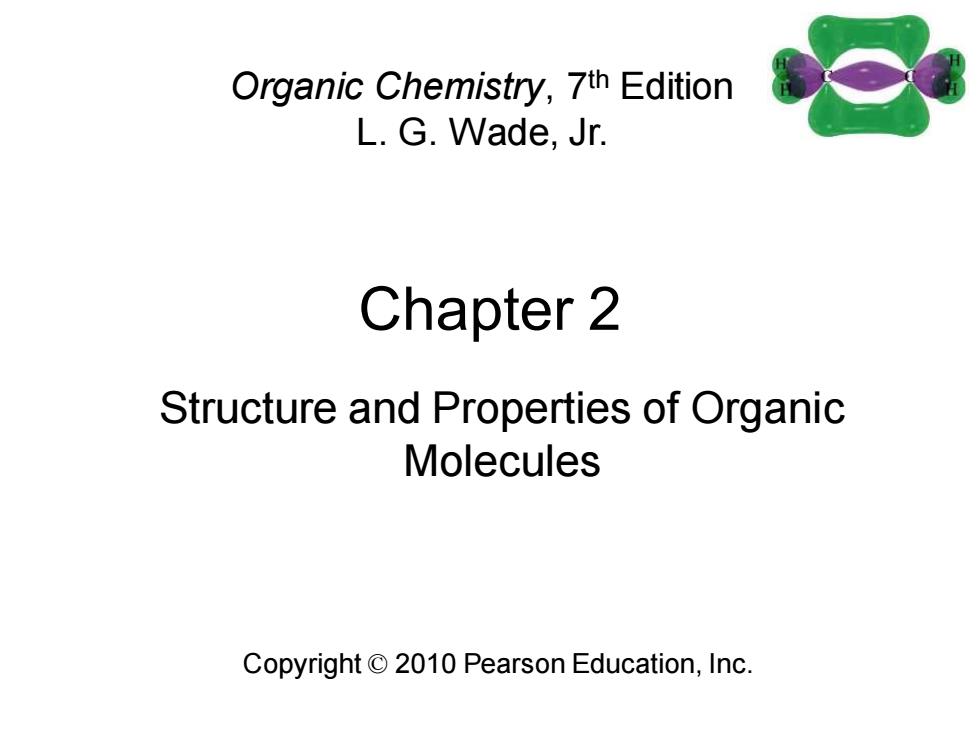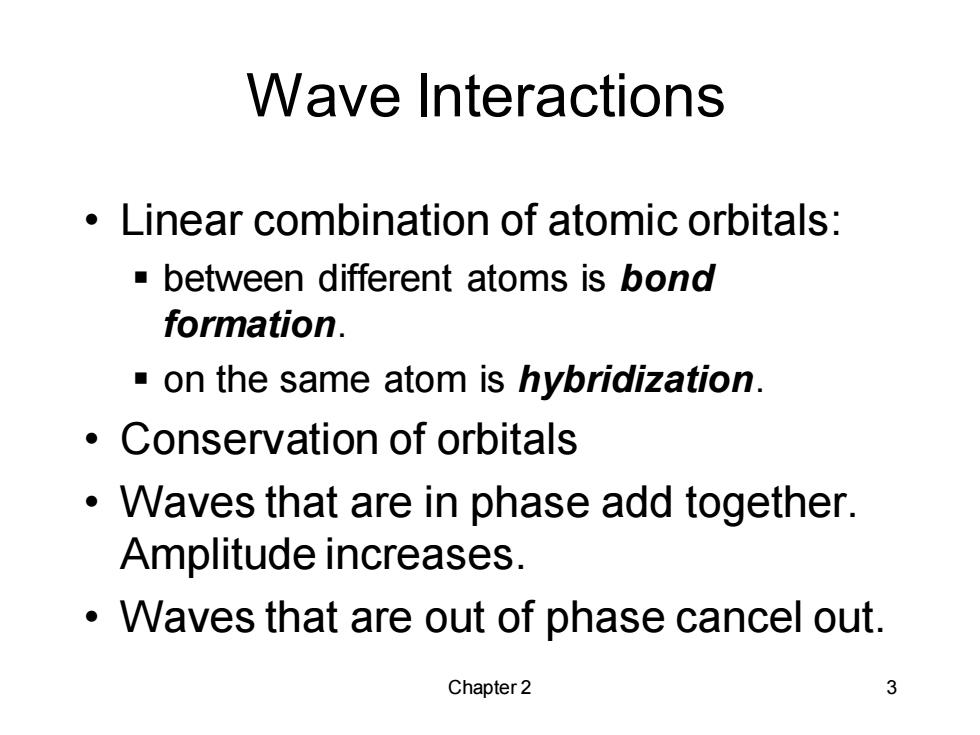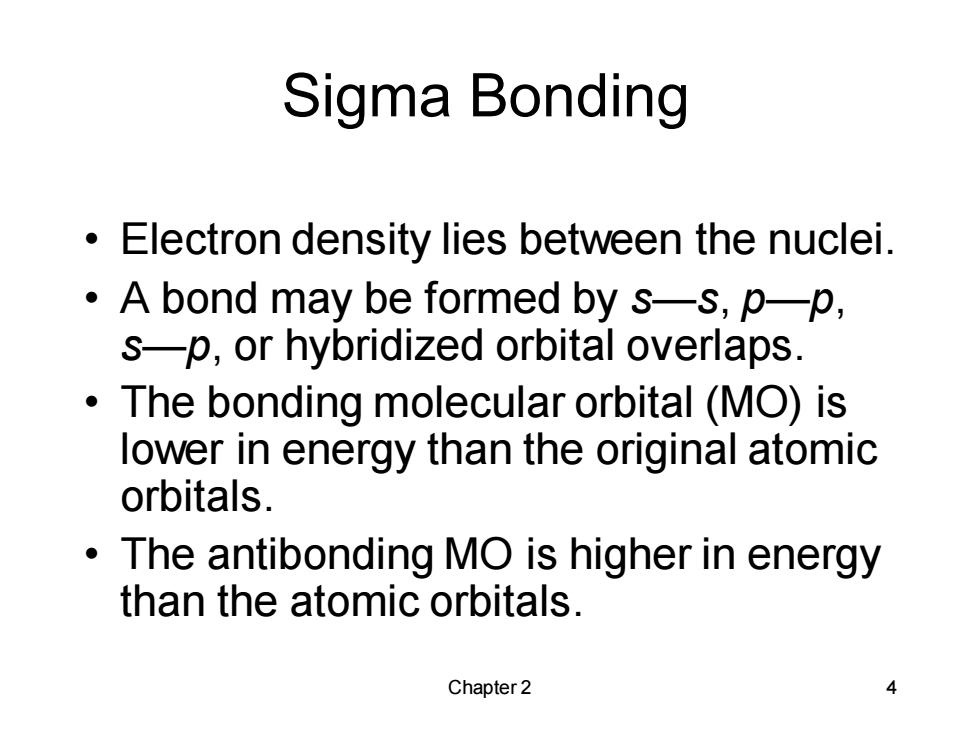
Organic Chemistry,7th Edition L.G.Wade,Jr. Chapter 2 Structure and Properties of Organic Molecules Copyright 2010 Pearson Education,Inc
Chapter 2 Copyright © 2010 Pearson Education, Inc. Organic Chemistry, 7th Edition L. G. Wade, Jr. Structure and Properties of Organic Molecules

Wave Properties of Electrons nodal plane nucleus represented by nucleus wave function (instantaneous picture) nodal plane Standing wave vibrates in fixed location. Wave function,y,is a mathematical description of size,shape,and orientation. Amplitude may be positive or negative. Node:Amplitude is zero. Chapter 2 2
Chapter 2 2 Wave Properties of Electrons • Standing wave vibrates in fixed location. • Wave function, , is a mathematical description of size, shape, and orientation. • Amplitude may be positive or negative. • Node: Amplitude is zero

Wave Interactions Linear combination of atomic orbitals: -between different atoms is bond formation. on the same atom is hybridization. Conservation of orbitals Waves that are in phase add together. Amplitude increases. Waves that are out of phase cancel out. Chapter 2 3
Chapter 2 3 Wave Interactions • Linear combination of atomic orbitals: ▪ between different atoms is bond formation. ▪ on the same atom is hybridization. • Conservation of orbitals • Waves that are in phase add together. Amplitude increases. • Waves that are out of phase cancel out

Sigma Bonding Electron density lies between the nuclei. A bond may be formed by s-s,p-p, s-p,or hybridized orbital overlaps. The bonding molecular orbital (MO)is lower in energy than the original atomic orbitals. The antibonding MO is higher in energy than the atomic orbitals. Chapter 2 4
Chapter 2 4 Sigma Bonding • Electron density lies between the nuclei. • A bond may be formed by s—s, p—p, s—p, or hybridized orbital overlaps. • The bonding molecular orbital (MO) is lower in energy than the original atomic orbitals. • The antibonding MO is higher in energy than the atomic orbitals

o Bonding MO Constructive interaction:The two Is orbitals are in phase and have the same sign. add bonding molecular orbital represented by: o bonding MO Pearson Prentice Hall.inc Formation of a o-bonding MO:When the 1s orbitals of two hydrogen atoms overlap in phase with each other,they interact constructively to form a bonding MO. Chapter 2 5
Chapter 2 5 s Bonding MO Formation of a s-bonding MO: When the 1s orbitals of two hydrogen atoms overlap in phase with each other, they interact constructively to form a bonding MO